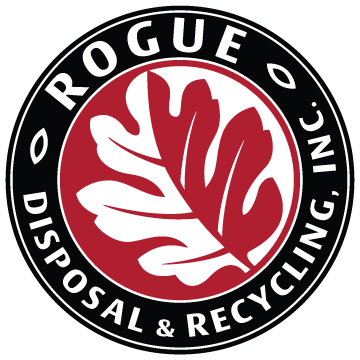How To Sample
The documentation must adequately identify the areas surveyed, sampled and tested and reflect that the waste delivered is from the area that was surveyed, sampled and tested.
Sample Location
The area from which to collect a sample depends on the region requiring remediation at the appropriate depth. Samples can be taken based on a grid pattern or based on generator knowledge of the area and the materials to be disposed. Each sample should consist of 10 locations within the sampling area (a subsample). Subsamples should be collected to the appropriate depth and mixed thoroughly to create a composite sample. Make sure subsamples are taken with all materials that will be transported for disposal. For instance, if the area is covered with 3 to 4 inches of ash and you will scalp 4 inches of subgrade – each subsample should be taken with the ash and mixed into (4 inches of soil. Once the composite sample is mixed, a portion should be separated for each laboratory analysis.
Number of Samples
Assuming the impacted area is less than 0.25 acre (100’ x 100’) and the depth of soil excavation is 4 inches or less, two composite samples will be required to be tested. Each composite sample should consist of 10 individual subsamples for analysis. For larger areas or deeper excavation, more composite samples are required to be tested.
Number of Composite Samples for Analysis Soil Removed With Ash | ||||
Impacted Area | 4” or less Subgrade | 4” – 6” Subgrade | 6”-8” Subgrade | 8” or more |
≤0.25 Acres | 2 | 3 | 4 | Call DCL for requirements |
>0.5 Acres & ≤0.75 Acres | 4 | 6 | 8 | Call DCL for requirements |
>0.75 Acres & ≤1 Acre | 6 | 9 | 12 | Call DCL for requirements |
>1 Acre | 7 | 11 | 14 | Call DCL for requirements |
Each composite sample requires a combination of 10 subsamples. For example, if six composite samples are required for analysis, 60 subsamples would need to be taken on the site and combined into those six composite samples (10 subsamples each).
Note: Samples should be collected by trained professionals wearing appropriate personal protection equipment. Ash may contain many hazardous substances, including asbestos — disturbing and collecting ash presents significant health risks. Untrained individuals should not disturb or collect ash.
Laboratory Analysis of Composite Sample
- Call or check the website of one or more labs to find out the cost of the analysis you need
- After choosing a lab, request any necessary paperwork (such as an information sheet), and find out how you should prepare and submit the sample
- Prepare and submit the sample according to the lab’s instructions. Most laboratories ask you to label the sample with identifying information, and to fill out and include an information sheet with the sample
Please contact the laboratory that you will be using to obtain the appropriate containers for testing, as well as understanding if the samples need to be preserved or transported on ice.
Please note that there is a large amount of information coming from many sources right now regarding what is and what is not required for fire cleanup, including testing of fire debris. Some of that information may conflict with the procedures set forth herein. The requirements set forth in these protocols are the requirements (as of the “Update as of” date) for ash and soil delivered to the Rogue Transfer Station or Dry Creek Landfill regardless of any other information circulating in the public or provided by the testing center, contractors or governmental officials.
Acceptable Levels
Dry Creek Landfill can accept material for disposal with laboratory test results below the limits shown below.
| TCLP Concentration
mg/L (ppm) | TPH
mg/kg (ppm) | Asbestos
Percentage | |
Arsenic | <5.0 | ||
Barium | <100 | ||
Cadmium | <1.0 | ||
Chromium | <5.0 | ||
Lead | <5.0 | ||
Mercury | <0.2 | ||
Selenium | <1.0 | ||
Silver | <5.0 | ||
TPH - Diesel | <10,000 | ||
TPH - Gas | <1,000 | ||
TPH - Oil | Any | ||
Asbestos | <1% | ||
If your results are higher than what is shown in the table above, please call us at 541.779.4161 for further information.
Additional testing and specific handling procedures are needed for high TPH concentrations. Material containing asbestos can be remediated by a certified asbestos consultant/expert and packaged for disposal in accordance with applicable laws and guidelines for disposal at Dry Creek Landfill. For more information, click here.
For More Information
For additional information, please call us at 541.779.4161.
Share This
